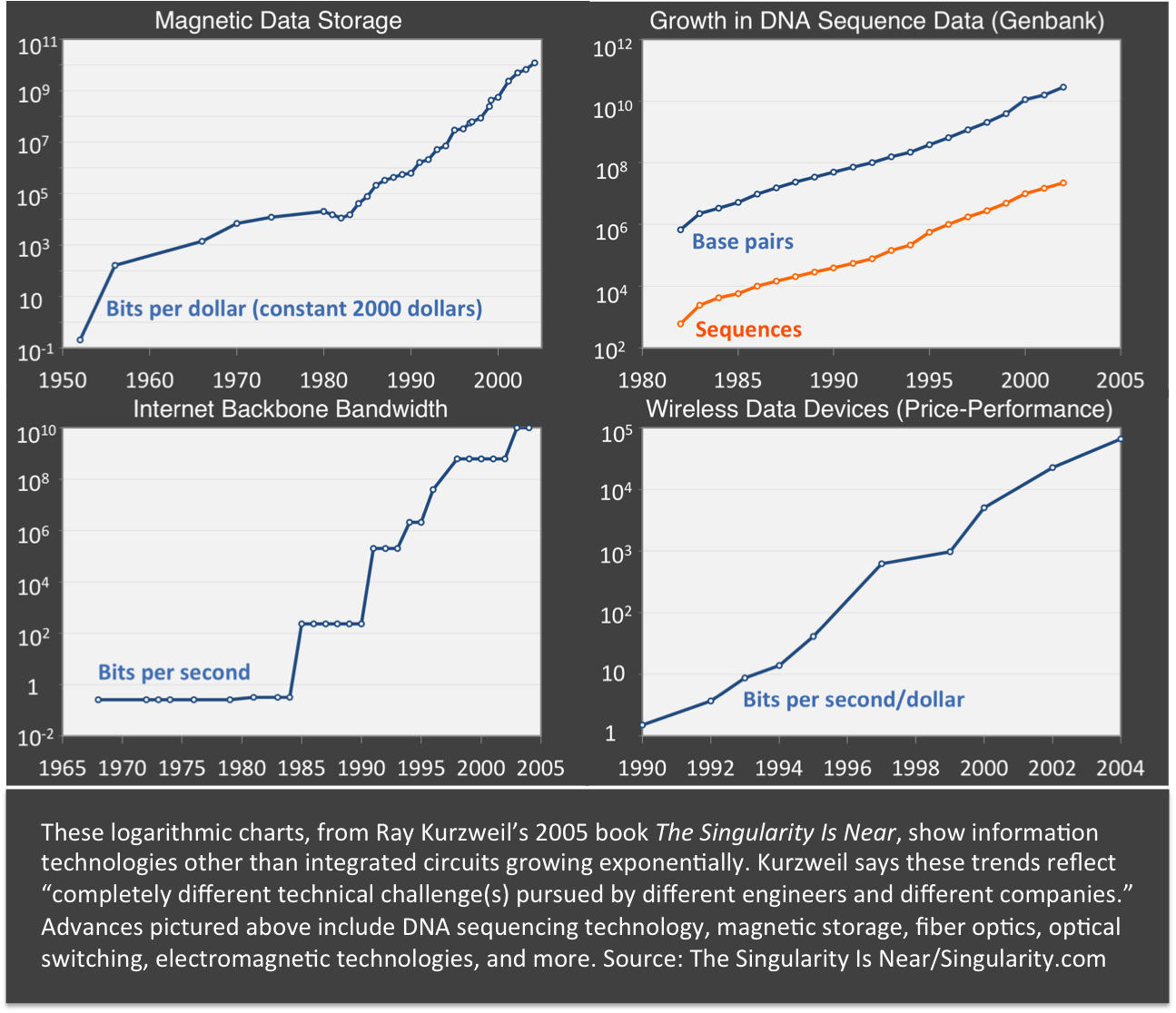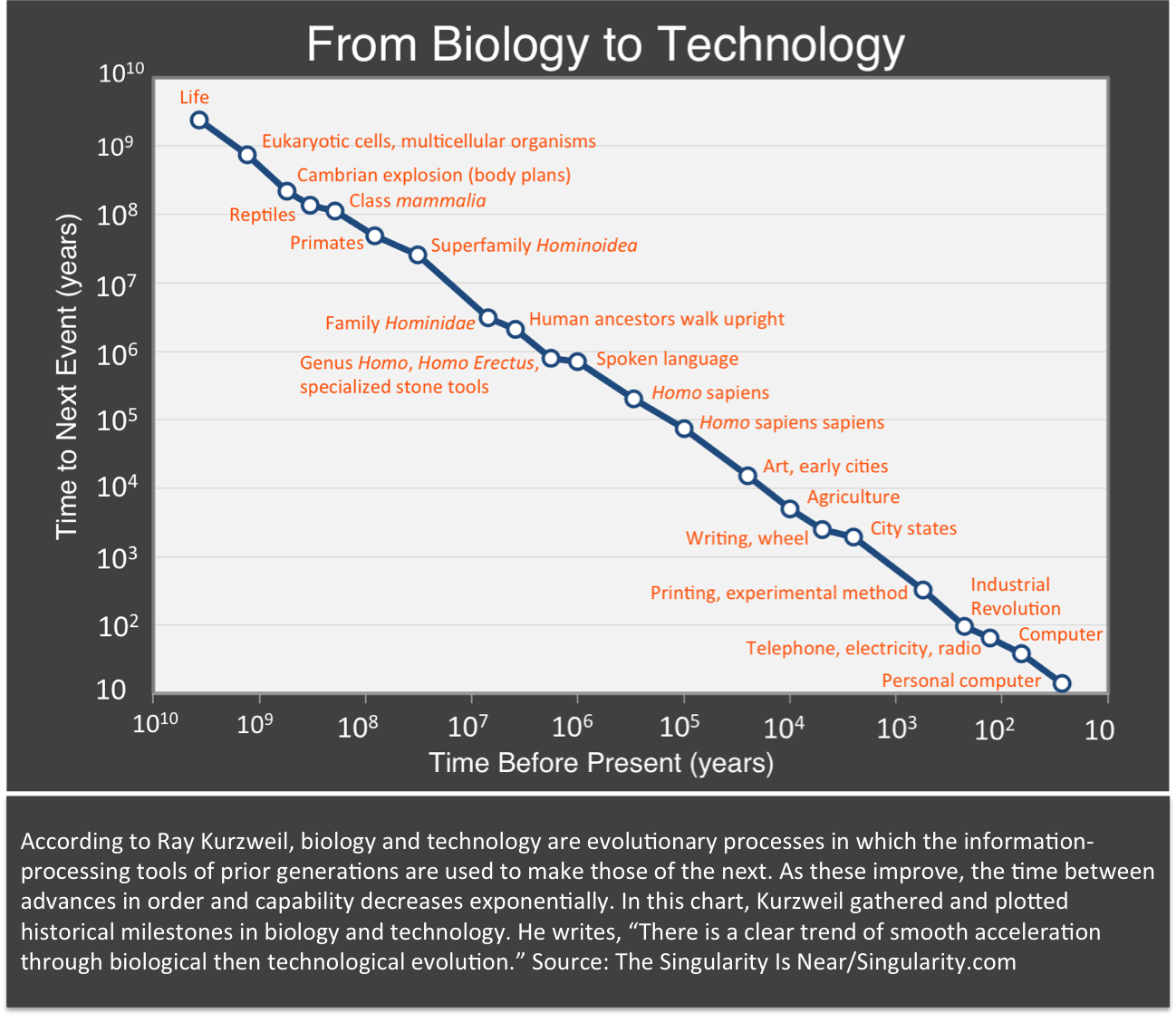Evolutionary developmental psychology (EDP) is a research paradigm that applies the basic principles of Darwinian evolution, particularly natural selection, to understand the development of human behavior and cognition. It involves the study of both the genetic and environmental mechanisms that underlie the development of social and cognitive competencies, as well as the epigenetic (gene-environment interactions) processes that adapt these competencies to local conditions.
EDP considers both the reliably developing, species-typical features of ontogeny (developmental adaptations), as well as individual differences
in behavior, from an evolutionary perspective. While evolutionary views
tend to regard most individual differences as the result of either
random genetic noise (evolutionary byproducts) and/or idiosyncrasies (for example, peer groups, education, neighborhoods, and chance encounters)
rather than products of natural selection, EDP asserts that natural
selection can favor the emergence of individual differences via
"adaptive developmental plasticity."
From this perspective, human development follows alternative
life-history strategies in response to environmental variability, rather
than following one species-typical pattern of development.
EDP is closely linked to the theoretical framework of evolutionary psychology (EP), but is also distinct from EP in several domains, including research emphasis (EDP focuses on adaptations of ontogeny, as opposed to adaptations of adulthood) and consideration of proximate ontogenetic and environmental factors (i.e., how development happens) in addition to more ultimate factors (i.e., why development happens), which are the focus of mainstream evolutionary psychology.
EDP is closely linked to the theoretical framework of evolutionary psychology (EP), but is also distinct from EP in several domains, including research emphasis (EDP focuses on adaptations of ontogeny, as opposed to adaptations of adulthood) and consideration of proximate ontogenetic and environmental factors (i.e., how development happens) in addition to more ultimate factors (i.e., why development happens), which are the focus of mainstream evolutionary psychology.
History
Development and evolution
Like mainstream evolutionary psychology, EDP is rooted in Charles Darwin's
theory of natural selection. Darwin himself emphasized development,
using the process of embryology as evidence to support his theory. From The Descent of Man:
Man is developed from an ovule...which differs in no respect from the ovules of other animals. The embryo itself at a very early period can hardly be distinguished from that of other members of the vertebrate kingdom.
Darwin
also published his observations of the development of one of his own
sons in 1877, noting the child's emotional, moral, and linguistic
development.
Despite this early emphasis on developmental processes, theories
of evolution and theories of development have long been viewed as
separate, or even opposed to one another (for additional background, see
nature versus nurture). Since the advent of the modern evolutionary synthesis, evolutionary theory has been primarily "gene-centric", and developmental processes have often been seen as incidental. Evolutionary biologist Richard Dawkins's
appraisal of development in 1973 illustrates this shift: "The details
of embryological developmental processes, interesting as they may be,
are irrelevant to evolutionary considerations." Similarly, sociobiologist E. O. Wilson regarded ontogenetic variation as "developmental noise".
As a consequence of this shift in perspective, many biologists
interested in topics such as embryology and developmental systems
subsequently branched off into evolutionary developmental biology.
Evolutionary perspectives in developmental psychology
Despite
the minimization of development in evolutionary theory, early
developmental psychology was influenced by evolution. Both Darwin's
theory of evolution and Karl Ernst von Baer's developmental principles of ontogeny shaped early thought in developmental psychology. Wilhelm T. Preyer,
a pioneer of child psychology, was heavily inspired by Darwin's work
and approached the mental development of children from an evolutionary
perspective.
However, evolutionary theory has had a limited impact on developmental psychology as a whole, and some authors argue that even its early influence was minimal.
Developmental psychology, as with the social sciences in general, has
long been resistant to evolutionary theories of development (with some notable exceptions, such as John Bowlby's work on attachment theory).
Evolutionary approaches to human behavior were, and to some extent
continue to be, considered a form of genetic determinism and dismissive
of the role of culture and experience in shaping human behavior (see Standard social science model).
One group of developmental psychologists who have embraced evolutionary perspectives are nativists,
who argue than infants possess innate cognitive mechanisms (or modules)
which allow them to acquire crucial information, such as language (for a
prominent example, see universal grammar).
Evolutionary developmental psychology
Evolutionary developmental psychology can be viewed as a more focused theoretical framework derived from the larger field of evolutionary psychology
(EP). Mainstream evolutionary psychology grew out of earlier movements
which applied the principles of evolutionary biology to understand the
mind and behavior such as sociobiology, ethology, and behavioral
ecology, differing from these earlier approaches by focusing on identifying psychological adaptations rather than adaptive behavior.
While EDP theory generally aligns with that of mainstream EP, it is
distinguished by a conscious effort to reconcile theories of both
evolution and development.
EDP theory diverges from mainstream evolutionary psychology in both the
degree of importance placed on the environment in influencing behavior,
and in how evolution has shaped the development of human psychology.
Advocates of EDP assert that evolutionary psychologists, while
acknowledging the role of the environment in shaping behavior and making
claims as to its effects, rarely develop explicit models (i.e.,
predictions of how the environment might shape behavior) to support
their claims. EDP seeks to distinguish itself from mainstream evolutionary psychology in this way by embracing a developmental systems approach,
and emphasizing that function at one level of organization (e.g., the
genetic level) effects organization at adjacent levels of an
organization. Developmental systems theorists such as Robert Lickliter
point out that the products of development are both genetic and
epigenetic, and have questioned the strictly gene-centric view of
evolution.
However, some authors have rebutted the claim that mainstream
evolutionary psychologists do not integrate developmental theory into
their theoretical programs, and have further questioned the value of
developmental systems theory.
Additionally, evolutionary developmental psychologists emphasize research on psychological development
and behaviors across the lifespan. Pioneers of EDP contrast their work
with that of mainstream evolutionary psychologists, who they argue focus
primarily on adults, especially on behaviors related to socializing and
mating.
Evolutionary developmental psychologists have worked to integrate
evolutionary and developmental theories, attempting to synthesize the
two without discarding the theoretical foundations of either. This
effort is evident in the types of questions which researchers working in
the EDP paradigm ask; in reference to Nikolaas Tinbergen's four categories of questions,
EP typically focuses on evolutionary ("Why") questions, while EDP
explicitly integrates proximate questions ("How"), with the assumption
that a greater understanding of the former category will yield insights
into the latter. See the following table for an overview of Tinbergen's questions.
|
|
Sequential vs. Static Perspective | ||
|---|---|---|---|
| Historical/Developmental
Explanation of current form in terms of a historical sequence
|
Current Form
Explanation of the current form of species
| ||
| How vs. Why Questions | Proximate
How an individual organism's structures function
|
Ontogeny
Developmental explanations for changes in individuals, from DNA to their current form
|
Mechanism
Mechanistic explanations for how an organism's structures work
|
| Evolutionary
Why a species evolved the structures (adaptations) it has
|
Phylogeny
The history of the evolution of sequential changes in a species over many generations
|
Adaptation
A species trait that evolved to solve a reproductive or survival problem in the ancestral environment
| |
Basic assumptions
The following list summarizes the broad theoretical assumptions of EDP. From "Evolutionary Developmental Psychology," in The Handbook of Evolutionary Psychology:
- All evolutionarily-influenced characteristics in the phenotype of adults develop, and this requires examining not only the functioning of these characteristics in adults but also their ontogeny.
- All evolved characteristics develop via continuous and bidirectional gene-environment interactions that emerge dynamically over time.
- Infants and children are prepared by natural selection to process some information more readily than others.
- Development is constrained by genetic, environmental, and cultural factors.
- Infants and children show a high degree of developmental plasticity and adaptive sensitivity to context.
- An extended childhood is needed in which to learn the complexities of human social communities.
- Many aspects of childhood serve as preparations for adulthood and were selected over the course of evolution (deferred adaptations).
- Some characteristics of infants and children were selected to serve an adaptive function at specific times in development and not as preparations for adulthood (ontogenetic adaptations).
Developmental adaptations
EDP assumes that natural selection creates adaptations for specific stages of development, rather than only specifying adult states.
Frequently, EDP researchers seek to identify such adaptations, which
have been subdivided into deferred adaptations, ontogenetic adaptations,
and conditional adaptations.
Deferred adaptations
Some
behaviors or traits exhibited during childhood or adolescence may have
been selected to serve as preparations for adult life, a type of
adaptation that evolutionary developmental psychologists have named
"deferred adaptations".
Sex differences in children's play may be an example of this type of
adaptation: higher frequencies of "rough-and-tumble" play among boys, as
well as content differences in fantasy play (cross-culturally, girls engage in more "parenting" play than boys),
seem to serve as early preparation for the roles that men and women
play in many extant contemporary societies, and, presumably, played over
human evolutionary history.
Ontogenetic adaptations
In
contrast to deferred adaptations, which function to prepare individuals
for future environments (i.e., adulthood), ontogenetic adaptations
adapt individuals to their current environment.
These adaptations serve a specific function during a particular period
of development, after which they are discarded. Ontogenetic adaptations
can be physiological (for example, when fetal mammals deriving nutrition
and oxygen from the placenta before birth, but no longer utilize the
placenta after birth) and psychological.
David F. Bjorklund has argued that the imitation of facial gestures by
infants, which has a predictable developmental window and seemingly
different functions at different ages, shows evidence of being an
ontogenetic adaptation.
Conditional adaptations
EDP
emphasizes that children display considerable developmental plasticity,
and proposes a special type of adaptation to facilitate adaptive
developmental plasticity, called a conditional adaptation. Conditional
adaptations detect and respond to relevant environmental cues, altering
developmental pathways in ways which better adapt an individual to their
particular environment. These adaptations allow organisms to implement
alternative and contingent life history strategies, depending on environmental factors.
Related research
Social learning and the evolution of childhood
The
social brain (or Machiavellian) hypothesis posits that the emergence of
a complex social environment (e.g., larger group sizes) served as a key
selection pressure in the evolution of human intelligence. Among primates, larger brains result in an extension of the juvenile period, and some authors argue that humans evolved (and/or expanded) novel developmental stages, childhood and adolescence, in response to increasing social complexity and sophisticated social learning.
While many species exhibit social learning to some degree and
seemingly possess behavioral traditions (i.e., culture), humans can
transmit cultural information across many generations with very high
fidelity. High fidelity cultural learning is what many have argued is necessary for cumulative cultural evolution,
and has only been definitively observed in humans, although arguments
have been made for chimpanzees, orangutans, and New Caledonian crows. Developmentally-oriented researchers have proposed that over-imitation of behavioral models facilitates cultural learning, a phenomenon which emerges in children by age three and is seemingly absent in chimpanzees.
Cooperation and prosociality
Behaviors that benefit other members of one's social group, particularly those which appear costly to the prosocial or "altruistic" individual, have received considerable attention from disciplines interested in the evolution of behavior. Michael Tomasello has argued that cooperation and prosociality are evolved characteristics of human behavior,
citing the emergence of "helping" behavior early in development
(observed among 18-24 month old infants) as one piece of evidence.
Researchers investigating the ontogeny and evolution of human
cooperation design experiments intended to reveal the prosociality of
infants and young children, then compare children's performance with
that of other animals, typically chimpanzees.
While some of the helping behaviors exhibited by infants and young
children has also been observed in chimpanzees, preschool-age children
tend to display greater prosociality than both human-raised and
semi-free-ranging adult chimps.
Life history strategies and developmental plasticity
EDP
researchers emphasize that evolved strategies are context dependent, in
the sense that a strategy which is optimal in one environment will
often be sub-optimal in another environment. They argue that this will
result in natural selection favoring "adaptive developmental
plasticity," allowing an organism to alter its developmental trajectory
in response to environmental cues.
Related to this is the idea of a life history strategy,
which can be conceptualized as a chain of resource-allocation decisions
(e.g., allocating resources towards growth or towards reproduction)
that an organism makes.
Biologists have used life history theory to characterize
between-species variation in resource-allocation in terms of a fast-slow
continuum (see r/K selection theory),
and, more recently, some anthropologists and psychologists have applied
this continuum to understand within-species variation in trade-offs
between reproductive and somatic effort.
Some authors argue that childhood environment and early life
experiences are highly influential in determining an individual's life
history strategy.
Factors such as exposure to violence, harsh child-rearing, and
environmental unpredictability (e.g., frequent moving, unstable family
composition) have been shown to correlate with the proposed behavioral
indicators of "fast" life history strategies
(e.g., early sexual maturation, unstable couple relationships,
impulsivity, and reduced cooperation), where current reproduction is
prioritized over future reproduction.
Criticism
John Tooby, Leda Cosmides,
and H. Clark Barrett have refuted claims that mainstream evolutionary
psychology neglects development, arguing that their discipline is, in
reality, exceptionally interested in and highly considerate of
development. In particular, they cite cross-cultural studies as a sort
of natural developmental "experiment," which can reveal the influence of
culture in shaping developmental outcomes. The authors assert that the
arguments of developmental systems theorists consists largely of truisms, of which evolutionary psychologists are well aware, and that developmental systems theory has no scientific value because it fails to generate any predictions.
Debra Lieberman similarly objected to the characterization of
evolutionary psychology as ignorant of developmental principles.
Lieberman argued that both developmental systems theorists and
evolutionary psychologists share a common goal of uncovering
species-typical cognitive architecture, as well as the ontogeny of that
architecture.







